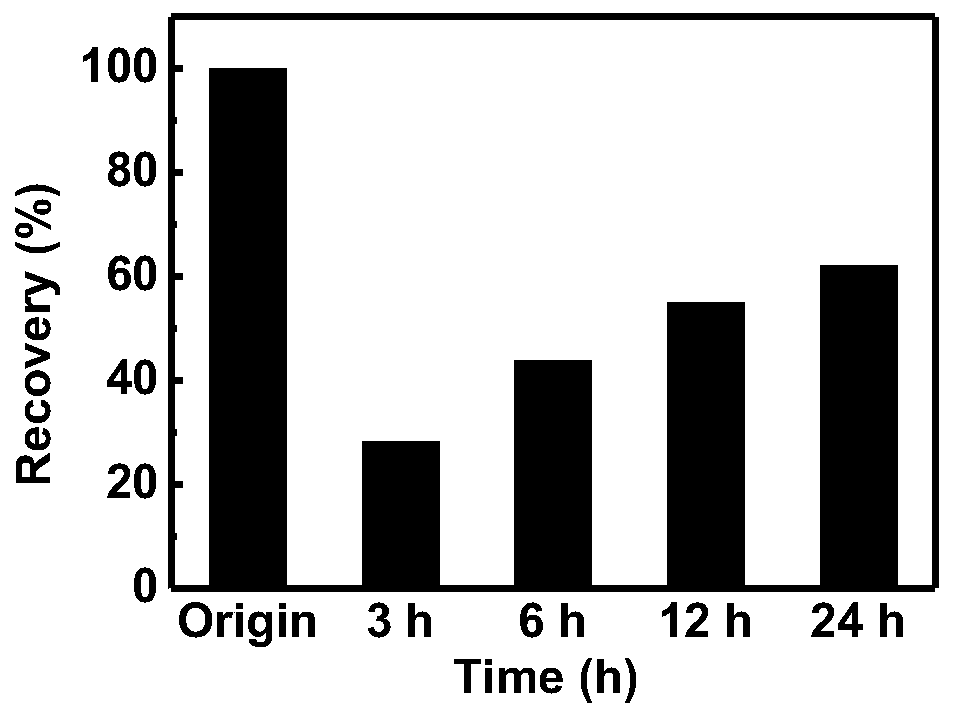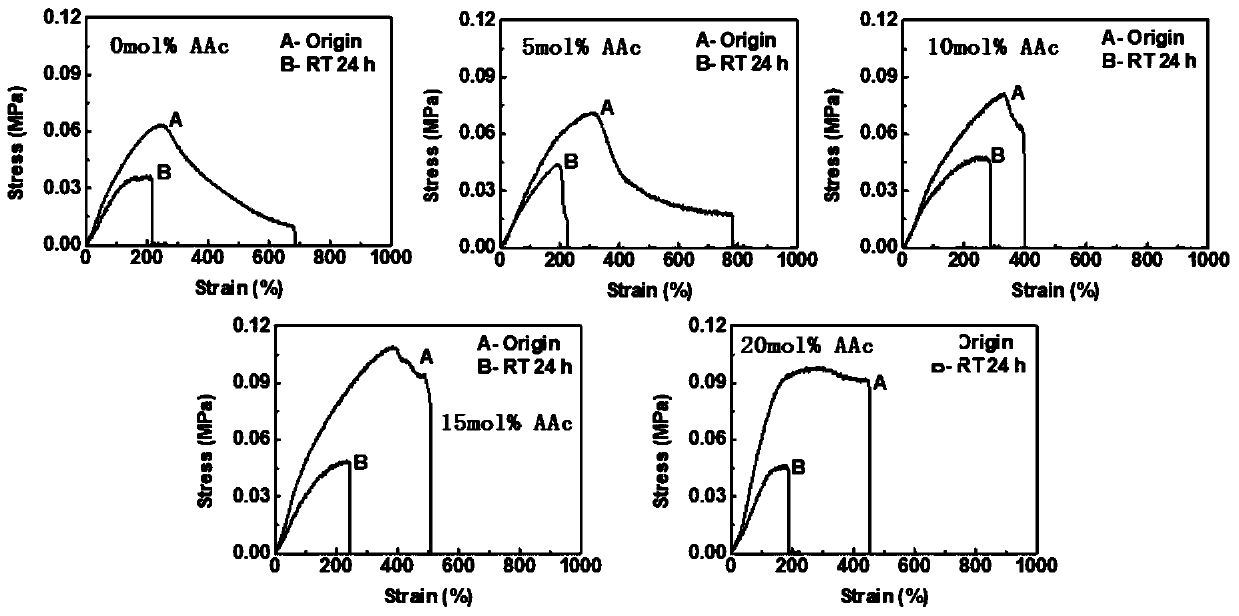Chitosan/zwitter-ion and acrylic acid copolymer double network self-healing hydrogel and preparation method thereof
A zwitterion and chitosan technology, applied in the field of hydrogel, can solve the problems of waste of raw materials, lack of self-healing performance, complicated preparation process, etc., and achieve a simple preparation method, excellent self-healing ability, and high sensitivity Effect
- Summary
- Abstract
- Description
- Claims
- Application Information
AI Technical Summary
Problems solved by technology
Method used
Image
Examples
Embodiment 1-8
[0045] A preparation method of chitosan / zwitterion and acrylic acid copolymer double network self-healing hydrogel, comprising the following preparation steps:
[0046] 1) placing chitosan (molecular weight less than 10000Da), zwitterionic monomer, acrylic acid monomer and initiator α-ketoglutaric acid in deionized water to obtain a mixed solution;
[0047] 2) Deoxygenate the mixed solution, and ultrasonically remove the air bubbles in the mixed solution to obtain a prepolymerized solution;
[0048] 3) Seal the pre-polymerization solution in a light-transmitting mold, irradiate it with ultraviolet light, and obtain a pre-gel after the reaction is completed;
[0049] 4) soaking the pregel in the multivalent anion solution to obtain the chitosan / zwitterion and acrylic acid copolymer double network self-healing hydrogel.
[0050] Wherein, the degree of deacetylation of chitosan described in Examples 1-6 is 90%, the amphoteric ion monomer is sulfobetaine methyl methacrylate, feed...
Embodiment 2
[0064] The stress-strain curve of the hydrogel prepared in Example 2 and its self-healing at room temperature for 24 hours is as follows: figure 1 As shown, the initial tensile strength and the tensile strength after 24 hours of self-healing correspond to the A and B curves in the figure respectively. Comparing the A curve, it can be known that when the content of sulfobetaine methyl methacrylate is greater than 0.7g / mL, with the When the content of acid betaine methyl methacrylate increases, the tensile strength of the double network hydrogel increases. When the SBMA content is 1.12g / mL, the tensile strength can reach up to 0.11MPa. Comparing curves A and B, it can be seen that When the SBMA content was 0.84g / mL, the self-healing performance of the hydrogel was the best, and the tensile strength could recover to 62% of the initial state after 24 hours of self-healing at room temperature.
Embodiment 3
[0065] The performance recovery rate of the double-network hydrogel prepared in Example 3 at room temperature for different times of self-healing is as follows: figure 2 As shown in the figure, the longer the time, the better the self-healing effect, and the performance recovery rate after 24 hours is 62%.
[0066] The stress-strain curves of the double network hydrogels with different acrylic acid contents prepared in Examples 3 and 4 after self-healing at room temperature for 24 hours are as follows: image 3 As shown, the initial tensile strength and the tensile strength after 24 hours of self-healing correspond to curves A and B in the figure respectively. Comparing curve A, it can be seen that when the acrylic acid content increases from 0mol% to 15mol%, the initial tensile strength of the double network hydrogel The strength increases. When the acrylic acid content is 15%, its initial tensile strength is 0.11MPa. When the acrylic acid content continues to increase to 20...
PUM
| Property | Measurement | Unit |
|---|---|---|
| Tensile strength | aaaaa | aaaaa |
Abstract
Description
Claims
Application Information
 Login to View More
Login to View More - R&D
- Intellectual Property
- Life Sciences
- Materials
- Tech Scout
- Unparalleled Data Quality
- Higher Quality Content
- 60% Fewer Hallucinations
Browse by: Latest US Patents, China's latest patents, Technical Efficacy Thesaurus, Application Domain, Technology Topic, Popular Technical Reports.
© 2025 PatSnap. All rights reserved.Legal|Privacy policy|Modern Slavery Act Transparency Statement|Sitemap|About US| Contact US: help@patsnap.com



